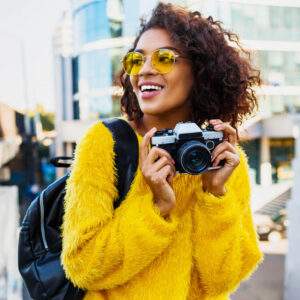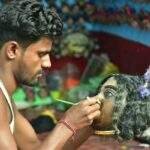Any image you check over online or offline, you will see how important it is given to color and contrast. No image is complete without correcting the color and contrast that elevates the overall look of the image. The interesting method of contrast photography involves experimenting with the tones or colors that make up an image. Today’s photography is a colorful kaleidoscope. It concerns how well you capture a scene’s colors through photography using your understanding of how various colors interact. Thus, “contrast” is an important photographic technique that, when skillfully used, draws attention to your photograph. To do this, though, you must have a solid understanding of the various contrasts and how they improve the appearance of your image. Let us check how contrast and color in photography go together.
What is a Contrast in Photography?
The act of capturing the differences between the components of an image is referred to as contrast in photography. Color, tones, textures, and shadows are a few examples of these aspects. Implementing contrast and proper color in your image improves your ability to tell a story with your images. Thus, it is crucial to comprehend how contrast functions in your photographs.
How do both work in the Photography field?
The get into the foundation of contrast photography, understanding the theory of color is important. Using color wheels and schemas to comprehend the many relationships between distinct colors, you can identify the color combinations that provide the most contrast. The colors can also be divided into two categories, warm and chilly. A shot with strong color contrast is produced when combining two cool colors.
Regarding photography, you must consider the lighting conditions and how different colors interact in the scene. Even though achieving contrast can be challenging, you can still use various editing applications to change how your photo looks.
Different Types of Contrast in Photography
- Tonal Contrast
“tonal contrast” describes the variation in tones or brightness among an image’s parts. Tonal contrast techniques can be used on both colored and monochromatic images. Tonal contrast, for instance, can draw attention to an image in color photography and want to keep the composition basic.
- High Contrast
Bright whites, deep blacks, and medium tones comprise a high-contrast image. Consequently, these images may result from the interaction of strong hues. This method might help your subject stand out from the picture’s background.
- Low Contrast
Instead of using white and black, you can use mid-tone for low-contrast photographs adding various shades of grey. As a result, these pictures don’t stand out but have a dreamy appearance with no shadows or highlights. As a result, they work best for dramatic landscapes, portraits, and situations for soft or warm tones in your pictures.
- Color Contrast
You can apply the various contrasts you’ve seen to color-contrast photos. As a result, these photos are composed of many tones of opposing colors. You must understand how one color affects the other when placed next to it to employ color contrast in your photographs effectively.
Conclusion
As we can see, color and contrast are pivotal in making the photograph look eye-popping. Like these, there are many other things you can learn about photography. The best is to start with the photography course at CAP Academy, where you get in-depth knowledge about the same practically.











